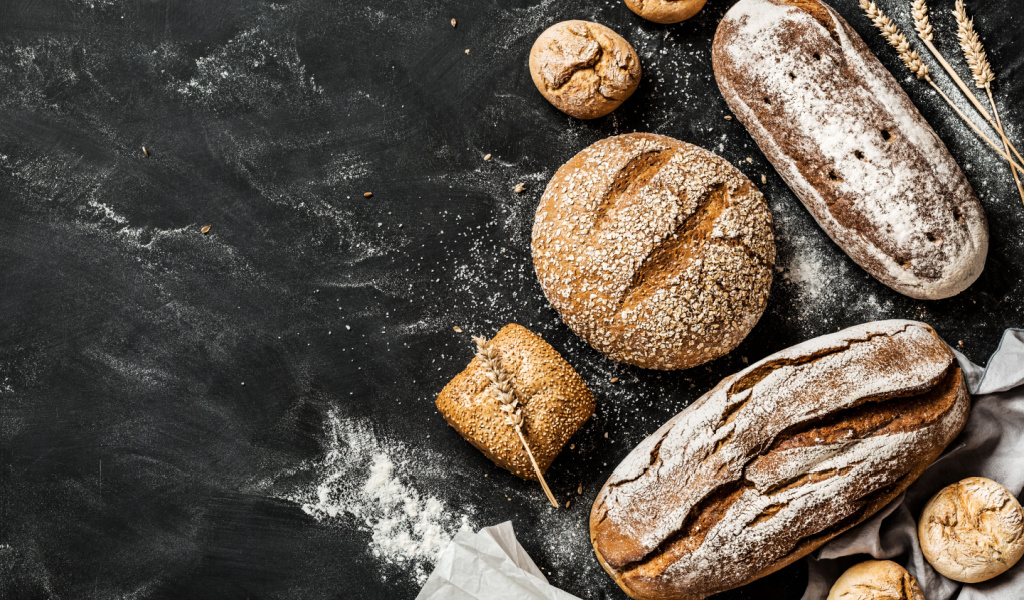Bread has been a staple food for centuries for people all across the world. It’s delicious and convenient, so what’s not to love about it?
How about the nutritional aspect, though? Well, that could be a cause for concern. Following the popularity of low-carb and gluten-free diets, bread has gotten somewhat of a bad reputation. But is bread really bad for you?
So long as you don’t have any medical conditions such as wheat allergy, gluten sensitivity, or celiac disease, there is no need to eliminate bread from your diet completely. On the contrary, bread is an excellent choice for a good and balanced diet.

Why Does Bread Get a Bad Rap?
Most people believe that bread is unhealthy. This argument is not entirely false because much of the bread you see on grocery shelves is produced on a mass scale. This means that it contains additives that aid in extending shelf life, enhancing flavor, improving texture, and speeding up production.
Having said that, it’s important to understand that there are plenty of different types of bread out there which are prepared in different ways by sourcing a variety of ingredients. Among the wide variety of bread, some include flatbread, whole grain bread, sourdough, sweetened bread, stored grain bread, cornbread, and leavened and unleavened bread.
Naturally, some varieties of bread are healthier than others. This is why paying attention to the ingredients and the Glycemic Index (GI) is important. Bread with lower GI tends to get absorbed and digested slowly, making you feel full for a long time. This includes heavy grain bread with seeds, nuts, linseed, and soy bread. Conversely, white bread has a high GI, which is also why some people eliminate it from their diets.
Factors to Consider When Buying Bread
Nutritional Profile
Carbohydrate is the primary nutrient in bread and an excellent fuel source for your body. It’s important to understand that carbs from minimally-processed whole grains have more minerals, vitamins, and fiber, making it a healthier option. Pay attention to whether the bread has been made with minimally-processed whole grain flour. Avoiding those made from refined white flour is a good idea if you want to make healthy eating choices.
Check the Label Carefully
Labeling can sometimes be deceiving. Even if your bread is labeled as multi-grain, organic, or 100% wheat, it’s a good idea to check the ingredient list to confirm.
The Fewer The Ingredients, The Better It Is
If the ingredient list is lengthy, it says quite a lot about the baking methods and processes. So, look for bread with fewer ingredients with names and terms you actually recognize. Stay away from bread that has vegetable oils or extra sweeteners.
Opt for Low-Sodium
Although bread doesn’t taste salty, it’s a top source of sodium. Be sure to opt for bread that has less than 150 milligrams of sodium per slice.
Low Sugar Bread
Sometimes, manufacturers add sugar in order to improve the color and taste of bread. Small amounts of sugar are all right, but anything above three grams per slice should be avoided. While checking the list of ingredients, watch out for words like honey, high-fructose corn syrup, or fruit juice. Some types of bread have artificial sweeteners, and this does nothing but feed your sweet cravings, so those are best avoided!
White Bread vs. Whole Grain Bread
White bread is prepared from processed flour that has been milled to remove the wheat germ and bran of the grain. This leaves only the starch-rich endosperm. What does this mean? In lay terms, much of the vitamins, minerals, and fiber have been removed, resulting in a light, fine flour, and a longer shelf life.
White flour makes bread that is easy to digest, and when consumed in high amounts, it can lead to weight gain, metabolic issues, type 2 diabetes, and heart conditions. But white bread can be a good option for those who have gut problems and have been advised to take a low-fiber diet.
On the other hand, whole grain flour includes all parts of the grain (bran, wheat germ, and endosperm). Therefore, the natural nutrients are preserved, giving your body more iron, zinc, and fiber than it would get from a white loaf. Whole Grains are intensely nutritious, and when eaten often, they can actually protect you from type 2 diabetes, heart disease, and even some forms of cancer.

Benefits of Wholegrain Bread
We Need the Carbs!
Did you know that carbohydrates are our body’s favorite energy source? Bread is one of the best sources of carbohydrates, and since it takes longer to digest, it makes you feel full for longer and provides a steady release of energy throughout the day.
It Doesn’t Make You Gain Weight
Since whole-grain bread is a high-fiber source that makes you feel full, it prevents cravings and overeating. Bread is often linked with weight gain, but so long as you nourish your body with the right food and enjoy it in moderation, you can go on to manage a healthy weight.
It’s A Good Source of Protein & Fiber
We all know that proteins are the body’s building blocks, and fiber is essential for gut and bowel health. Bread is rich in both, making it a very nutritious option. Additionally, whole-grain bread is also an excellent source of iron, vitamins, folate, and calcium.
It’s Versatile
Bread can be eaten in several ways and paired with other healthy foods. Here are some great accompaniments to whole-grain bread:
- Poached egg and salad leaves and tomato
- Nut and seed butters
- Mashed avocado seasoned with salt, lime, and pepper
- Hummus
- Salmon or canned tuna
- Sliced cheese
Bottom Line
Many people love bread and for good reason too. Sinking the teeth into a warm slice of fresh bread or a crusty baguette is enticing, but there are a lot of conflicting opinions on whether bread is bad for you. So, is it actually unhealthy? Well, not if you’ve carefully read the label and chosen the most nutritious option, then it might be.
For those who live a low-carb life, bread is a bad idea, while others stick to following the age-old staple of the table. Some others prefer the safer option of making their own bread, so they know exactly what they are eating. Regardless, there is no denying that so long as bread is chosen well and consumed in moderation, it’s a good option for everyone except those with an allergy or intolerance.




